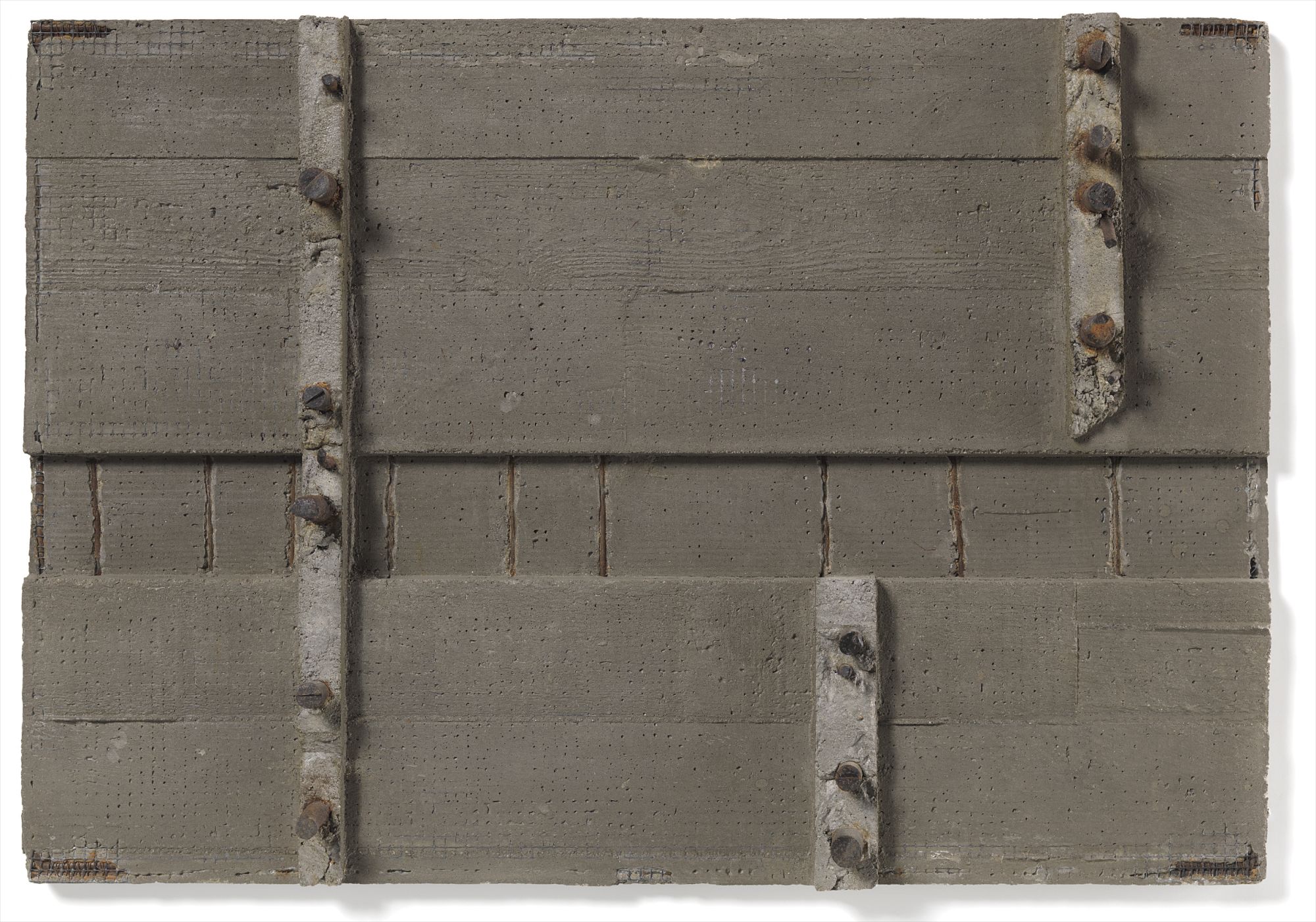

15
Giuseppe Uncini
Cementarmato
cement, iron
25 x 35 7/8 x 4 1/2 in. (63.5 x 91.1 x 11.4 cm)
Signed, titled and dated "Uncini Cementarmato 1960 Roma" on the reverse. This work is registered with the Archivio Uncini, Bergamo under number 60-027.
Full-Cataloguing
Giuseppe Uncini paved the way for the use of new materials within the tradition of classical sculpture. His technique developed out of material painting, a style that emerged in Italy in the 1950s, an attribute that inspired both his use of materials and architectural approach. Leaving representation and traditional means of painting behind, material art sought to separate the picture from the panel, a goal which Uncini achieved through his use of concrete and iron. By filling the picture plane with materials and objects not conventionally utilized in fine art, Uncini was able to direct focus to the materials and the way in which they interact in space. By incorporating the significance of light and shadow into his sculptural works, Uncini discovered emptiness to be an integral aspect of sculpture and it is in this sense that the sculptures are able to form new relationships with their environments.
Cementarmato, 1966 is an impressive example of Uncini’s series of works with this title. Casting concrete and steel, Uncini revolutionized the technical aspect of sculpture, thus fusing and exploring the relationship between art and science. Created at a time when Italy’s largest cities were quickly urbanizing, Uncini’s bare, rough, unadorned works distinctly express Italian Modernity. This hard, new aesthetic stood as a symbol for the wonder of industrial productions and as a representation of the beauty of the fragment. Credited with transforming expressionless materials into an expression of surface and structure, Uncini was able to create works that possessed no literal meaning and rather articulated the presence of pure form.
Cementarmato, 1966 is an impressive example of Uncini’s series of works with this title. Casting concrete and steel, Uncini revolutionized the technical aspect of sculpture, thus fusing and exploring the relationship between art and science. Created at a time when Italy’s largest cities were quickly urbanizing, Uncini’s bare, rough, unadorned works distinctly express Italian Modernity. This hard, new aesthetic stood as a symbol for the wonder of industrial productions and as a representation of the beauty of the fragment. Credited with transforming expressionless materials into an expression of surface and structure, Uncini was able to create works that possessed no literal meaning and rather articulated the presence of pure form.